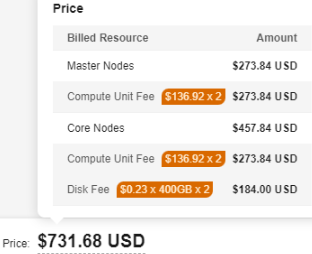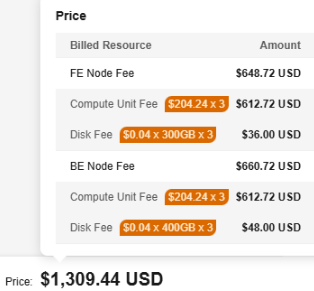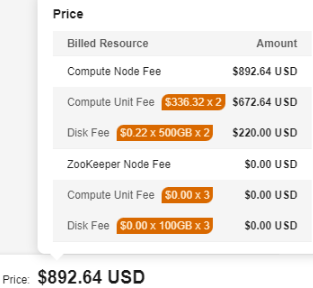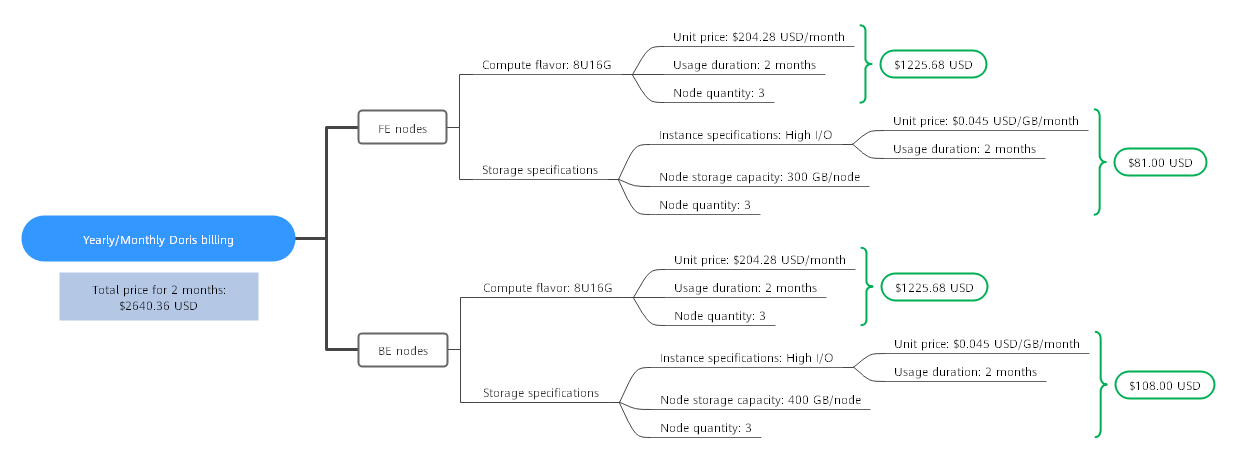Yearly/Monthly Billing
Yearly/Monthly billing is a prepaid billing mode in which you pay before using resources. It is suitable when your resource requirements are fixed because you can pay less by using longer. This section describes the billing rules for yearly/monthly CloudTable resources.
Application Scenario
In yearly/monthly billing mode, you need to pay for a required duration in advance. This mode is suitable for long-term and relatively fixed service requirements. The yearly/monthly billing mode is recommended for the following scenarios:
- Long-term workloads with stable resource requirements, such as official websites, online malls, and blogs.
- Long-term projects, such as scientific research projects and large-scale events.
- Workloads with predictable traffic bursts, for example, e-commerce promotions or festivals.
Billed Items
You are billed for the following items on a yearly/monthly basis.
|
Item |
Description |
|---|---|
|
Compute |
Compute specifications of a node |
|
Storage |
Storage specifications and capacity of a node |
|
Nodes |
Number of nodes |
When planning to purchase an HBase, Doris, or ClickHouse cluster, the detailed fee breakdown can be found at the bottom of the ECS purchasing page, as illustrated in the following figure.



You are charged for:
- Node quantity
- Storage specifications
Billing Usage Period
A yearly/monthly CloudTable instance is billed for the purchased duration. The billing starts when you activated or renewed the subscription, and ends at 23:59:59 of the expiry date.
For example, if you purchased a one-month CloudTable instance on March 08, 2023, 15:50:04, the billed usage period is from March 08, 2023, 15:50:04 to April 08, 2023, 23:59:59.
Billing Examples
Suppose you purchased an instance on March 8, 2023, 15:50:04. The charged resources include compute units and data storage. Assume the subscription is for one month, and will be manually renewed for one month before it expires:
- The first billing period: Mar 08, 2023, 15:50:04–Apr 08, 2023, 23:59:59
- The second billing period: Apr 08, 2023, 23:59:59–May 08, 2023, 23:59:59
You must prepay for each billing period. Table 2 shows the billing formula.
|
Item |
Formula |
Unit Price |
|---|---|---|
|
Compute |
Unit price of node specifications x Required duration x Number of nodes |
The actual fee depends on the price displayed on the console. |
|
Storage |
Data storage unit price x Data storage capacity x Number of nodes x Required duration |
The actual fee depends on the price displayed on the console. |

The prices in the figure are just examples. The actual prices are those displayed on the Billing Center.



Impact on Billing After Specification Change
If the specifications of a yearly/monthly CloudTable instance no longer meet your needs, you can change the specifications on the console. The system will recalculate the price and either bill or refund you the difference.
- HBase configuration change: horizontal scale-out, disk capacity expansion, and specification change.
- Doris configuration change: horizontal scale-out, disk capacity expansion, and specification change.
- ClickHouse configuration change: horizontal scale-out, disk capacity expansion, and specification change.
Impacts of Expiration
Figure 7 shows the statuses a yearly/monthly CloudTable resource can go through throughout its lifecycle. After an instance is purchased, it enters the valid period and runs normally during this period. If the instance is not renewed after it expires, before being deleted, it first enters a grace period and then a retention period.
Expiration Reminder
From the 7th day before a yearly/monthly CloudTable instance expires, the system will send an expiration reminder to the creator of the Huawei Cloud account by email, SMS, and internal message.
Impact After Expiration
If your yearly/monthly CloudTable instance is not renewed after it expires, it changes to the Expired state and enters a grace period. During this period, you can still access CloudTable.
If the yearly/monthly CloudTable instance is not renewed after the grace period ends, its status turns to Frozen and it enters a retention period. You cannot perform any operations on the resource while it is in the retention period.
If the yearly/monthly CloudTable instance is not renewed by the time the retention period ends, the compute resources (vCPUs and memory), EVS disks, and EIPs will be released and data cannot be restored.
Feedback
Was this page helpful?
Provide feedbackThank you very much for your feedback. We will continue working to improve the documentation.See the reply and handling status in My Cloud VOC.
For any further questions, feel free to contact us through the chatbot.
Chatbot







